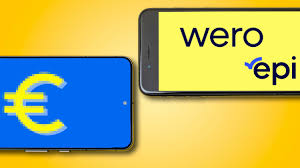1. Introduction: Digital Payments and the Rise of Virtual Currencies
In today’s fast-evolving financial landscape, digital payments have become an integral part of daily life. As businesses and consumers shift toward online and contactless transactions, the demand for seamless, secure, and cost-effective payment solutions has surged. Digital payments refer to money transfers that occur electronically without the need for physical exchange, whether through credit cards, bank transfers, mobile apps, or digital wallets.
At the same time, virtual currencies like cryptocurrencies (e.g., Bitcoin, Ethereum) and Central Bank Digital Currencies (CBDCs) are transforming the financial ecosystem. While cryptocurrencies operate on decentralized blockchains, CBDCs are government-issued digital versions of national currencies. Virtual currencies promise enhanced speed and security while reducing the dependence on traditional banking systems and payment processors.
Against this backdrop, Europe has been seeking ways to strengthen its payment infrastructure and reduce reliance on non-European financial systems, particularly global card networks like Visa and Mastercard. This is where the European Payments Initiative (EPI) and its innovative platform, Wero AB, come into play.
2. European Payments Initiative (EPI): Creating a Unified European Payment Solution
Launched in 2020, the European Payments Initiative (EPI) was born out of the need to create a competitive and independent European payment system. The EPI is backed by several major European banks and aims to establish a pan-European payment solution that unifies domestic payment systems, allowing users to make transactions across Europe without relying on third-party payment processors like Visa or Mastercard.
Key goals of EPI include:
- Enhancing Payment Efficiency: Enabling faster and cheaper transactions through direct bank-to-bank transfers.
- Strengthening European Sovereignty: Reducing dependency on non-European financial infrastructure, ensuring that Europe remains in control of its financial data and regulations.
- Encouraging Innovation: Supporting the integration of new technologies like virtual currencies and blockchain, positioning Europe at the forefront of digital payment advancements.
With increasing cross-border trade within the EU and the global shift toward e-commerce, the need for a unified and competitive European payment system has never been more urgent.
3. Wero AB: EPI’s Flagship Platform for Digital and Virtual Payments
Wero AB is one of the primary outcomes of the European Payments Initiative. It is a digital payment platform designed to facilitate Account-to-Account (A2A) transfers, enabling users to send money directly between bank accounts without needing an intermediary such as a credit card provider or a payment processor like PayPal. This feature makes Wero particularly attractive for businesses looking to reduce transaction fees and processing times, as well as for consumers who want a seamless and efficient payment experience.
Wero also introduces QR code payments, allowing users to make instant payments by simply scanning a code with their mobile device. This feature can be particularly useful for in-person transactions, such as retail shopping, public transportation, or peer-to-peer payments.
One of the key innovations of Wero AB is its integration with virtual currencies. While the platform currently focuses on handling fiat currencies like the euro, it has been designed to accommodate future developments in digital currencies, including CBDCs and stablecoins. This forward-thinking approach makes Wero one of the most versatile digital payment solutions in Europe, with the potential to integrate into broader global payment systems as virtual currencies gain traction.
4. The Interaction of Wero with Virtual Currencies
Virtual currencies are revolutionizing global finance, and Wero AB is positioning itself to leverage these advancements. While many payment systems focus solely on traditional fiat currencies, Wero is built to be compatible with the evolving landscape of digital currencies, ensuring future-proofing and versatility.
Cryptocurrency Compatibility: Although Wero primarily supports fiat currencies, it is equipped to interact with blockchain technologies that underpin cryptocurrencies like Bitcoin, Ethereum, and Ripple. These currencies offer decentralized payment methods that bypass traditional banking systems, potentially allowing Wero users to transfer value globally without facing the limitations and high fees of cross-border transactions.
Central Bank Digital Currencies (CBDCs): With several European countries and the European Central Bank (ECB) exploring the development of digital euros, Wero is poised to integrate CBDCs into its platform. By enabling seamless, real-time transactions between CBDCs and traditional fiat currencies, Wero can facilitate more efficient cross-border payments, reduce transaction costs, and enhance financial inclusion.
Stablecoins: Unlike volatile cryptocurrencies, stablecoins are digital currencies pegged to a stable asset, such as the US dollar or the euro. Wero’s compatibility with stablecoins opens up the possibility for businesses and consumers to conduct transactions in digital currencies that have the same value as traditional money, without the volatility associated with assets like Bitcoin. This could be particularly advantageous for cross-border trade, where currency fluctuations can have significant financial implications.
5. The Benefits of Wero AB in the European Payments Ecosystem
Wero AB’s introduction offers significant benefits, particularly in the context of Europe’s Single Market and the SEPA (Single Euro Payments Area) initiative. These benefits include:
Increased Efficiency: By enabling direct bank-to-bank transfers and eliminating intermediaries, Wero reduces processing times. Payments that typically take several days through traditional channels can be settled instantly, which is particularly beneficial for e-commerce and businesses engaged in international trade.
Cost Reduction: Wero minimizes the need for expensive third-party payment processors, which often charge high transaction fees. By offering an alternative to Visa and Mastercard, Wero ensures that users can enjoy lower fees while conducting secure transactions.
Enhanced Security: The integration of blockchain technology and adherence to European regulatory frameworks ensures that Wero provides a highly secure payment environment. Data privacy, anti-money laundering (AML) compliance, and secure transactions are at the forefront of the platform’s design.
Cross-Border Transactions: With Wero’s real-time, cross-border capabilities, businesses and consumers can engage in international trade without the delays and costs typically associated with foreign exchange or multiple intermediary banks.
6. Wero vs. Other Digital Payment Platforms
When comparing Wero to other major digital payment platforms like PayPal, Visa, Mastercard, and SEPA Instant, it’s important to note several differentiators:
- PayPal: While PayPal offers global digital payment services, it relies on card networks and can be expensive for merchants due to high processing fees. Wero, on the other hand, cuts out intermediaries and offers lower transaction costs.
- Visa and Mastercard: These traditional card networks dominate the payment landscape but are reliant on infrastructure that involves multiple layers of processing, leading to delays and higher costs. Wero offers a more streamlined, direct payment method.
- SEPA Instant: SEPA Instant allows for real-time transfers within the Eurozone. Wero builds upon this by integrating additional features like QR payments and future compatibility with virtual currencies.
7. Challenges and Future Prospects of Wero
Despite its advantages, Wero faces several challenges as it seeks to gain widespread adoption across Europe. One key obstacle is the entrenched dominance of Visa and Mastercard in the global payment ecosystem. Convincing consumers and businesses to switch to a new platform will require significant investment in education and marketing.
Another challenge is the regulatory environment. While Wero operates in full compliance with European regulations, the development of CBDCs and integration with virtual currencies brings additional regulatory considerations. Policymakers will need to ensure that these digital currencies are subject to proper oversight to prevent issues such as money laundering and fraud.
That said, the future prospects for Wero are bright. The European Union’s ongoing push for digital sovereignty and independence from non-European financial systems could provide a fertile environment for Wero’s growth. Additionally, as CBDCs become more widespread, Wero’s ability to integrate with these digital currencies will give it a competitive edge in both the European and global markets.
8. Conclusion
Wero AB, as part of the European Payments Initiative, represents a major leap forward in Europe’s quest for a unified, efficient, and secure digital payment system. With its forward-thinking design, Wero not only meets the current demands for fast, secure, and low-cost payments but also anticipates the future by preparing for the integration of virtual currencies. As Europe continues to enhance its digital infrastructure, Wero AB could emerge as a cornerstone of the continent’s digital economy, shaping the future of cross-border trade, finance, and commerce.




